Difference between Gen AI and AI agent and Agentic AI
Concrete scenario Example of Gen AI and AI agent and Agentic AI
When to use which
Real time application
Generative AI
Creates content. It produces text, images, code, audio, etc., in response to a prompt. It doesn’t have goals or do multi‑step work on its own.
Definition: Models that create new content—such as text, images, audio, or code—based on patterns learned from large datasets.
How It Works: Takes user prompts and responds reactively by generating content; its output is based on its training but it does not act or make decisions independently.
Examples: ChatGPT, DALL·E, Midjourney (for text, images, and artistic content creation).
Strengths: Creativity, content generation, summarization, answering questions, code generation.
Typical Use Cases: Writing articles, creating images/music/videos, summarizing documents, code generation
import openai
# API key for OpenAI
openai.api_key = 'your_openai_api_key'
# Using GPT to generate content based on a prompt
response = openai.Completion.create(
engine="text-davinci-003",
prompt="Write a blog about the importance of AI in healthcare.",
max_tokens=500
)
# Output the generated content
print(response.choices[0].text.strip())
AI agent
Acts to achieve a goal. Any system (rule‑based, RL, or LLM‑powered) that perceives → decides → acts in an environment—may or may not generate content.
Definition: Software entities powered by AI models programmed to complete specific, well-defined tasks by following predetermined rules, logic, or algorithms.
How It Works: Acts within boundaries—given a task or a goal, the agent follows a prescribed set of steps (scripts) to accomplish it, interacting with users or systems as necessary; adapts only within its programmed limits.
Examples: Customer service chatbots, scheduling assistants, web crawlers, trading bots.
Strengths: Automation of repetitive or structured workflow tasks, handling user queries, simple decision-making.
Typical Use Cases: Handling customer queries (e.g., banking chatbots), booking appointments, endpoint monitoring
import random
# Step 1: Define the AI Agent Class
class EmailMarketingAgent:
def __init__(self, user_name):
self.user_name = user_name
self.email_opened = random.choice([True, False]) # Simulate email opened
self.email_clicked = random.choice([True, False]) # Simulate if the link was clicked
# Step 2: Prompt - What action should the agent take?
def receive_prompt(self):
# Simulating a prompt given to the AI agent: "Decide whether to send an email based on user behavior"
print(f"Received prompt: 'Decide whether to send an email based on user behavior.'")
# Step 3: LLM - Process the prompt and decide the action
def process_llm(self):
# Here the LLM is a simple decision-making function for illustration
# In a real-world scenario, this could be replaced with an advanced LLM model (e.g., GPT) to generate personalized content
print("Processing prompt through LLM: Analyzing user behavior to generate response.")
# Step 4: Observation (User Behavior)
def observe_user_behavior(self):
print(f"User {self.user_name} opened email: {self.email_opened}")
print(f"User {self.user_name} clicked email link: {self.email_clicked}")
return self.email_opened, self.email_clicked
# Step 5: Decision (Based on observed behavior)
def make_decision(self, email_opened, email_clicked):
if email_opened and email_clicked:
return "send follow-up email"
elif email_opened and not email_clicked:
return "send reminder email"
else:
return "no action"
# Step 6: Action (Send email based on decision)
def take_action(self, decision):
if decision == "send follow-up email":
print(f"Sending a follow-up email to {self.user_name}...")
elif decision == "send reminder email":
print(f"Sending a reminder email to {self.user_name}...")
else:
print(f"No action taken. {self.user_name} didn't engage enough.")
# Full cycle: Prompt → LLM → Observation → Decision → Action
def run(self):
self.receive_prompt() # Step 1: Receive the prompt
self.process_llm() # Step 2: Process prompt using LLM
observed_behavior = self.observe_user_behavior() # Step 3: Observe user behavior
decision = self.make_decision(*observed_behavior) # Step 4: Make decision based on observations
self.take_action(decision) # Step 5: Take action based on the decision
# Step 7: Create an instance of the agent and run the cycle
agent = EmailMarketingAgent(user_name="John Doe")
for _ in range(3): # Simulate 3 different user behaviors
agent.run()
==============Another way===================
import random
# Step 1: Define the Email Marketing AI Agent Class
class EmailMarketingAgent:
def __init__(self, user_name):
self.user_name = user_name
# Simulating the tracking behavior:
self.email_opened = self.track_email_open() # Simulate whether the email was opened
self.email_clicked = self.track_email_click() # Simulate whether the email link was clicked
# Simulate email open tracking (e.g., hidden pixel)
def track_email_open(self):
# In a real system, this would check if the tracking pixel was loaded
return random.choice([True, False]) # Randomly simulate if email was opened (True/False)
# Simulate link click tracking (e.g., by appending a tracking ID to the link)
def track_email_click(self):
# In a real system, this would check if the user clicked a link with a unique tracking ID
return random.choice([True, False]) # Randomly simulate if email link was clicked (True/False)
# Step 2: Observation (User Behavior)
def observe_user_behavior(self):
print(f"User {self.user_name} opened email: {self.email_opened}")
print(f"User {self.user_name} clicked email link: {self.email_clicked}")
return self.email_opened, self.email_clicked
# Step 3: Decision (Based on observed behavior)
def make_decision(self, email_opened, email_clicked):
if email_opened and email_clicked:
return "send follow-up email"
elif email_opened and not email_clicked:
return "send reminder email"
else:
return "no action"
# Step 4: Action (Send email based on decision)
def take_action(self, decision):
if decision == "send follow-up email":
print(f"Sending a follow-up email to {self.user_name}...")
elif decision == "send reminder email":
print(f"Sending a reminder email to {self.user_name}...")
else:
print(f"No action taken. {self.user_name} didn't engage enough.")
# Full cycle: Observation → Decision → Action
def run(self):
observed_behavior = self.observe_user_behavior() # Step 2: Observe user behavior
decision = self.make_decision(*observed_behavior) # Step 3: Make decision based on observations
self.take_action(decision) # Step 4: Take action based on the decision
# Step 5: Create an instance of the agent and run the cycle
agent = EmailMarketingAgent(user_name="John Doe")
for _ in range(3): # Simulate 3 different user behaviors
agent.run()
Agentic AI
An AI agent powered by modern LLMs with autonomy. It plans multi‑step workflows, uses tools/APIs, reflects on results, and proactively pursues goals with minimal supervision
Definition: Advanced AI systems with autonomous, goal-driven behavior capable of planning, making decisions, adapting, and acting independently across complex or unpredictable environments.
How It Works: Goes beyond single-task automation: can coordinate and sequence multi-step processes, reason across contexts, self-learn, interact with multiple systems/tools, and operate with minimal human oversight. Agentic AI systems often include several AI agents working together, orchestrated for more complex objectives.
Examples: Advanced personal assistants that plan your calendar, book travel, respond to emails, and reschedule meetings without constant prompts; autonomous vehicles that dynamically adapt to road and weather conditions; business process automation across departments.
Strengths: High autonomy, ability to handle complex, context-dependent, adaptive workflows, persistent goal pursuit.
Typical Use Cases: Workflow automation, supply chain optimization, autonomous vehicles, smart city management, adaptive security and compliance checks
import random
import time
# Step 1: Define the LLM (Large Language Model) for processing the prompt
class LLM:
def __init__(self):
self.name = "Large Language Model"
def process_prompt(self, prompt):
# Simulate processing of a prompt (this could be complex, using GPT, etc.)
print(f"{self.name} is processing the prompt: '{prompt}'")
# Just returning some example task breakdown based on the prompt
time.sleep(2)
return ["Generate Content", "Schedule Email", "Engage User"]
# Step 2: Define the specialized agents that will perform specific tasks
class ContentGenerationAgent:
def __init__(self):
self.name = "Content Generation Agent"
def generate_content(self):
print(f"{self.name} is generating content...")
# Simulating content generation
time.sleep(2)
return "Generated content: 'This is your email content!'"
class EmailSchedulingAgent:
def __init__(self):
self.name = "Email Scheduling Agent"
def schedule_email(self, content):
print(f"{self.name} is scheduling the email with content: {content}")
# Simulating email scheduling
time.sleep(2)
return "Email scheduled successfully."
class UserInteractionAgent:
def __init__(self):
self.name = "User Interaction Agent"
def interact_with_user(self):
print(f"{self.name} is interacting with the user...")
# Simulating user interaction
time.sleep(2)
return "User interaction complete: 'Responding to user queries.'"
# Step 3: Define the Multi-Agent System that coordinates the agents
class MultiAgentSystem:
def __init__(self):
self.llm = LLM()
self.content_agent = ContentGenerationAgent()
self.email_agent = EmailSchedulingAgent()
self.user_agent = UserInteractionAgent()
def handle_task(self, prompt):
# Step 3.1: Process the prompt with the LLM
tasks = self.llm.process_prompt(prompt)
print(f"LLM processed the prompt. Suggested tasks: {tasks}\n")
# Step 3.2: Delegate tasks to the appropriate agent based on LLM's suggestion
if "Generate Content" in tasks:
content = self.content_agent.generate_content()
if "Schedule Email" in tasks:
email_status = self.email_agent.schedule_email(content)
if "Engage User" in tasks:
user_status = self.user_agent.interact_with_user()
return content, email_status, user_status
# Step 4: The main driver code
if __name__ == "__main__":
prompt = "Create a personalized email campaign"
# Create the multi-agent system
multi_agent_system = MultiAgentSystem()
# Step 4.1: Handle the prompt with the multi-agent system
content, email_status, user_status = multi_agent_system.handle_task(prompt)
# Step 4.2: Output results of the task
print(f"\nResults:")
print(content)
print(email_status)
print(user_status)
output
LLM is processing the prompt: 'Create a personalized email campaign'
LLM processed the prompt. Suggested tasks: ['Generate Content', 'Schedule Email', 'Engage User']
Content Generation Agent is generating content...
Email Scheduling Agent is scheduling the email with content: Generated content: 'This is your email content!'
User Interaction Agent is interacting with the user...
Results:
Generated content: 'This is your email content!'
Email scheduled successfully.
User interaction complete: 'Responding to user queries.'
Concrete scenario Example of Gen AI and AI agent and Agentic AI
Goal: “Book me a Delhi–Mumbai flight under ₹6,000 for August 10 and email me the ticket.”
Generative AI: Writes a nice email or suggests a list of airlines if you give it data—but it won’t go search, compare, or book by itself.
AI agent: Could be a scripted bot that hits a single airline API and books the cheapest seat—works if everything matches its programmed path.
Agentic AI: Breaks the goal into steps (search multiple sites → compare fares → pick best → complete booking → generate invoice → email), handles captchas/API errors/retries, and asks you for confirmation if constraints aren’t met.
When to use which
Start with Generative AI for drafting, summarizing, ideation, code snippets, or data transformation.
Use an AI Agent when you need decisions/actions in an environment (recommendations, control systems, operations), even without language.
Adopt Agentic AI when tasks are multi‑step, require web/API/tool use, and benefit from autonomy—keep a human‑in‑the‑loop and strong guardrails early on.
Implementation checklist for Agentic AI (practical)
Planner & executor: turn goals into steps and execute them.
Tooling: API wrappers (search, databases, forms, email, RPA).
Memory/RAG: retrieve past context, documents, credentials.
Critic/reflector: verify outputs, retry with revised plans.
Policies/guardrails: allowed actions, rate limits, PII handling, approvals.
Metrics: success rate, intervention rate, latency, cost, safety incidents.
Real time application
Real-Time Interaction with Systems or APIs
AI Agent: Can interact with external systems, APIs, and databases to fetch data, perform actions, or trigger events. For example, a trading bot can read market data in real-time, decide whether to buy/sell based on the market conditions, and execute trades autonomously.
Generative AI: It can only generate a report on how the trading bot should work based on a given prompt but cannot execute trades, interact with APIs, or adjust strategies in real-time.
Real-World Example:
AI Agent: A chatbot in customer support accesses your account details, checks order statuses, and initiates return requests. It performs actions in real-time.
Generative AI: It can only generate a response like, "Your order has been shipped" but cannot access the order system or perform actions like initiating a return.
Decision Making & Autonomous Problem Solving
AI Agent: Able to make decisions based on environmental input or observations, and it can adapt its actions based on results. For example, a robotic vacuum cleaner navigates around obstacles, decides the most efficient cleaning path, and adapts if something goes wrong (e.g., if it encounters a new obstacle).
Generative AI: While it can generate a plan or guide for how a vacuum might work, it cannot adapt the vacuum’s path in real time based on changes in its environment. It doesn’t have sensory input or real-time decision-making capabilities.
Real-World Example:
AI Agent: A delivery drone navigates through traffic, weather changes, and other dynamic obstacles in real-time, adjusting its route based on conditions.
Generative AI: It could help design the algorithm or suggest optimal routes but cannot perform the live navigation or decision-making during the flight.
Multi-Step Task Execution with Real-Time Feedback
AI Agent: Can execute multi-step tasks and adjust based on outcomes or new data. For instance, a virtual assistant can book flights, handle payments, send confirmations, and send reminders—making decisions between steps (e.g., rechecking prices or choosing alternate routes).
Generative AI: It can generate one piece of content at a time (like an email or a flight summary) but cannot perform real-time actions or adapt based on external results.
Real-World Example:
AI Agent: An AI-powered booking assistant that interacts with websites, checks flight prices, and makes booking choices. It can also re-book or cancel flights as necessary, without any human intervention.
Generative AI: It could write the email or provide a summary of what flights might be best but cannot perform actions like searching, booking, or following up.
Task Automation and Control Systems
AI Agent: Can automate complex tasks such as controlling a manufacturing assembly line, monitoring equipment in real-time, or adjusting settings based on incoming sensor data. For example, an industrial AI agent might adjust the temperature, speed, or machinery alignment based on performance data in real time.
Generative AI: It can generate instructions on how to improve the system but cannot control machinery or monitor real-time data.
Real-World Example:
AI Agent: A smart thermostat adjusts home temperature based on environmental changes (e.g., detecting changes in room occupancy or outdoor temperature).
Generative AI: It might help explain how to optimize heating and cooling but cannot perform the real-time task of adjusting the thermostat.
Real-Time Adaptation to New Data
AI Agent: Continuously adapts to new, incoming data and changes its strategy. For example, a navigation agent in a self-driving car can adjust its path, speed, and behavior based on real-time traffic updates, road conditions, and passenger input.
Generative AI: It can generate text or offer suggestions on how the system might adapt but cannot process or adapt to real-time data from the environment.
Real-World Example:
AI Agent: A self-driving car monitors its environment (traffic, pedestrians, road signs) in real time and adjusts its driving behavior accordingly.
Generative AI: It could generate reports or scenarios based on past data but cannot handle real-time adaptation or control of the car.
Continuous Monitoring and Intervention
AI Agent: Can constantly monitor systems and take corrective action when needed, such as a network security agent detecting an intrusion in real-time and automatically blocking malicious access or mitigating threats.
Generative AI: While it can generate guidelines or summaries about what to do in the case of a breach, it cannot directly monitor or act on real-time threats.
Real-World Example:
AI Agent: An AI-powered security system detects unusual behavior in a network, such as a sudden increase in traffic or unauthorized access, and initiates a defense mechanism.
Generative AI: It might describe potential security risks or how to react to specific vulnerabilities but cannot perform the real-time action of blocking or protecting against a live attack
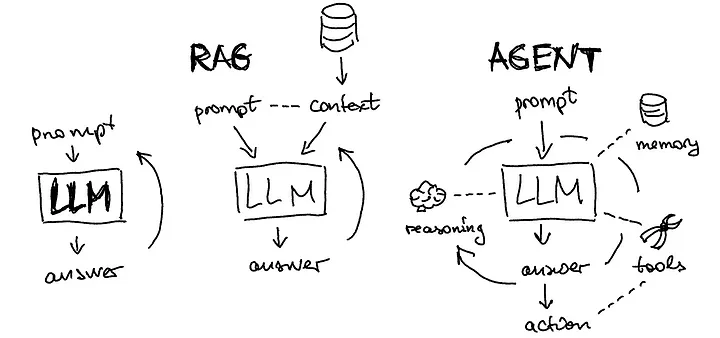
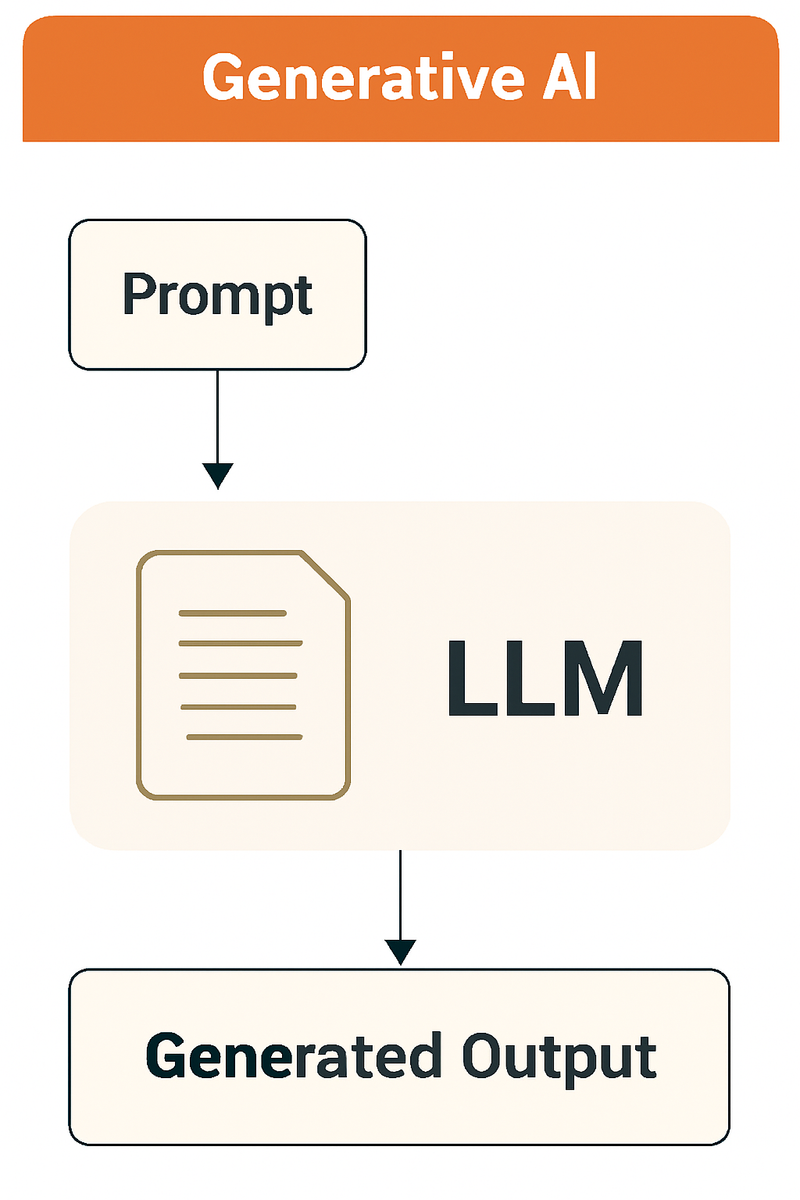
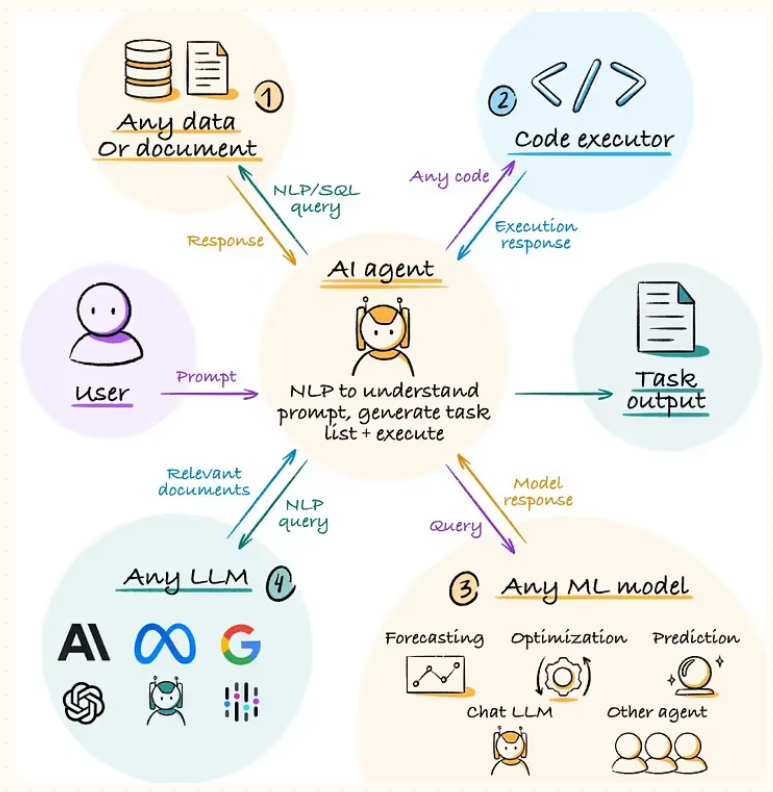
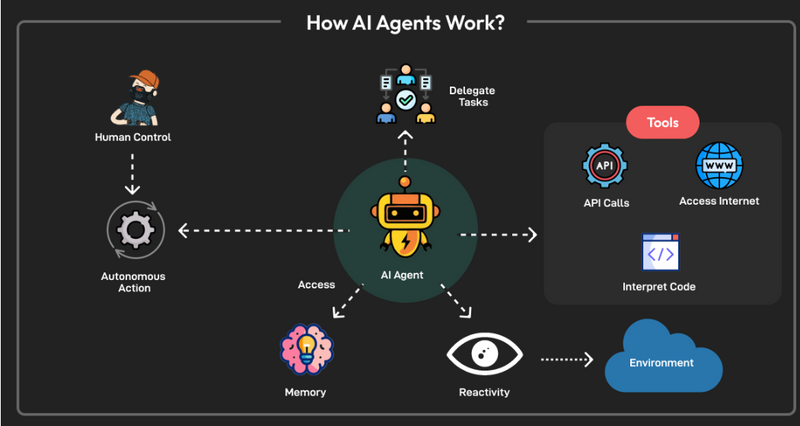
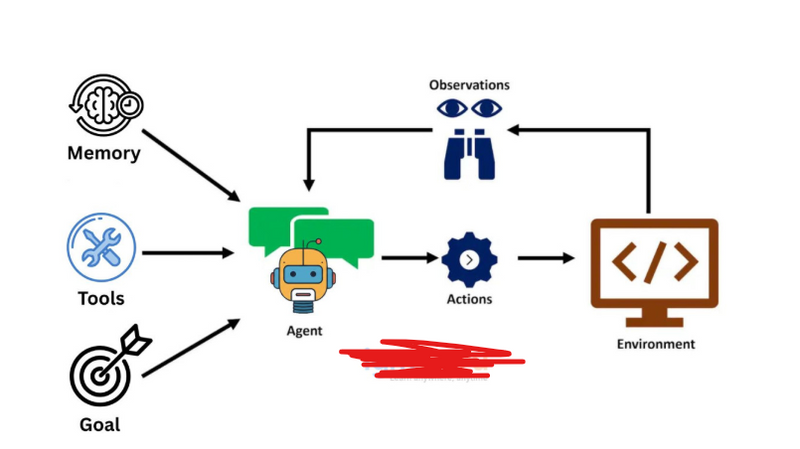
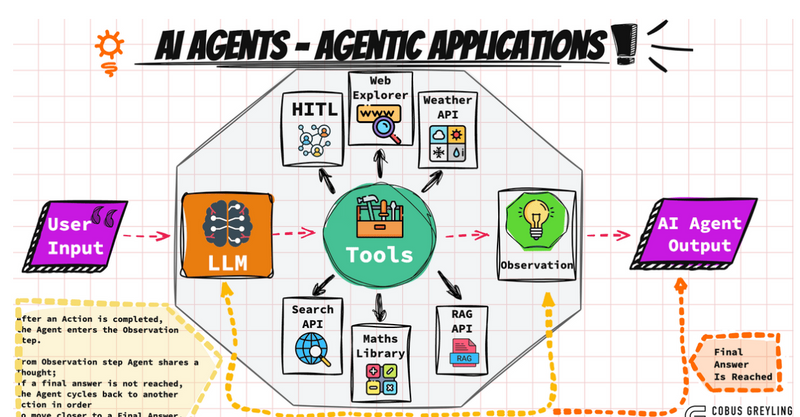
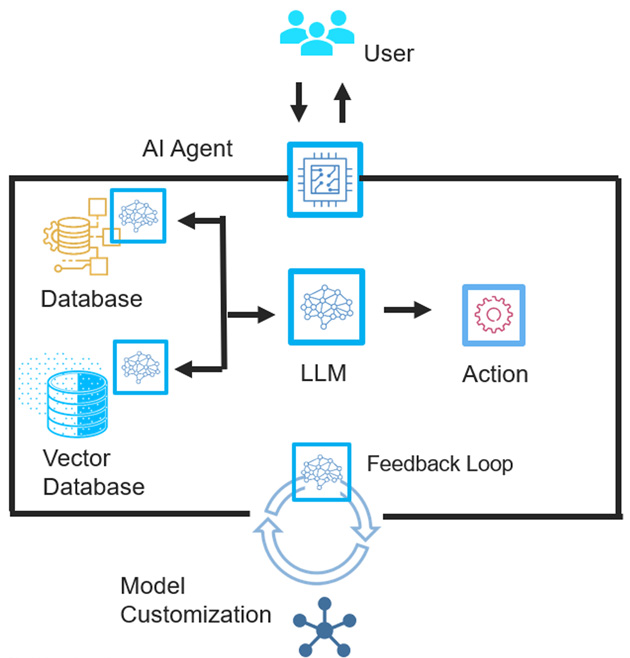
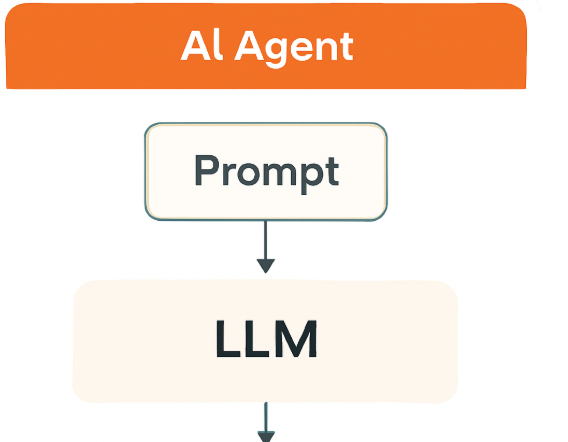
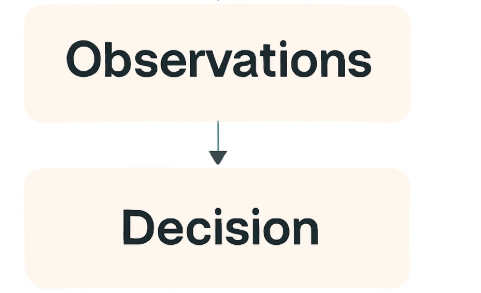
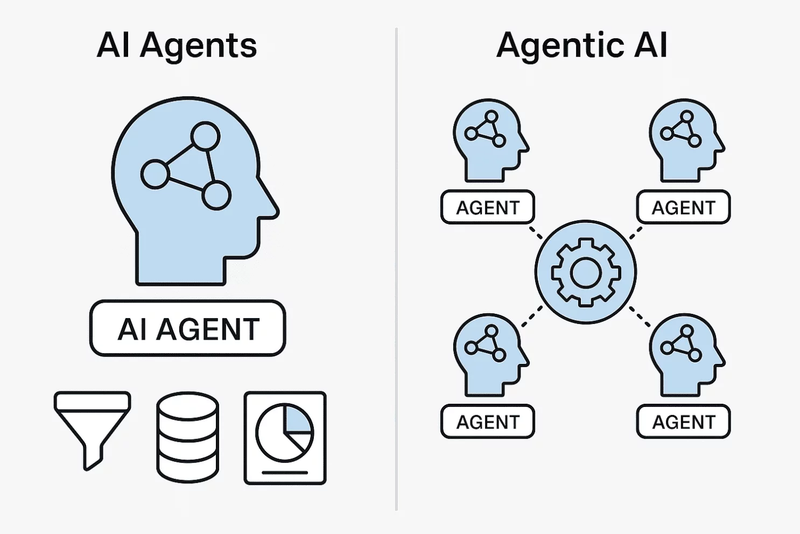
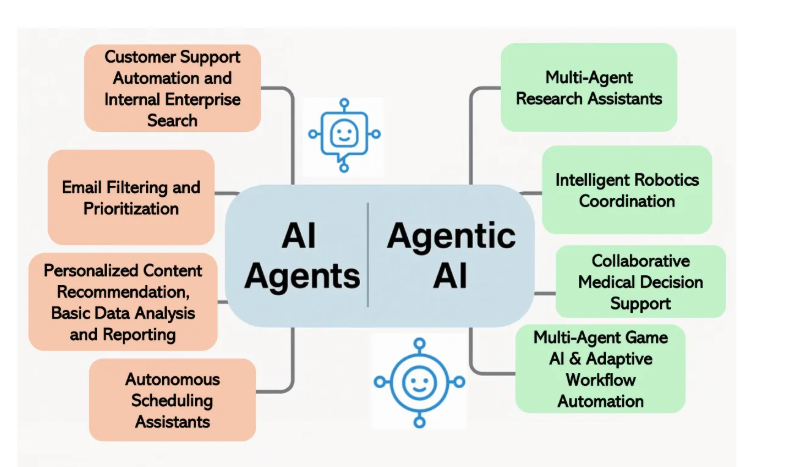
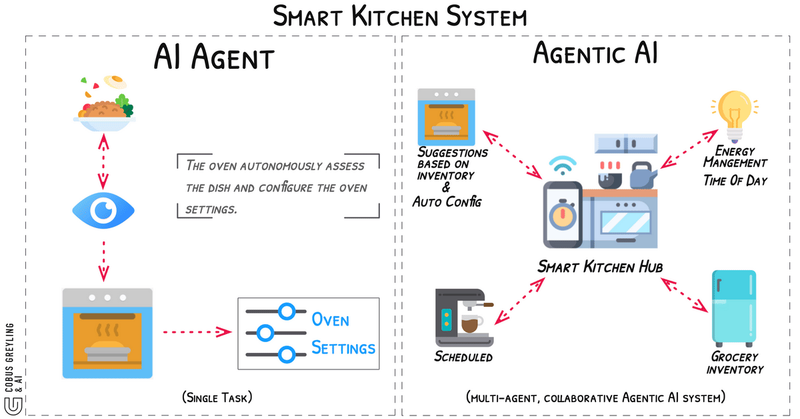

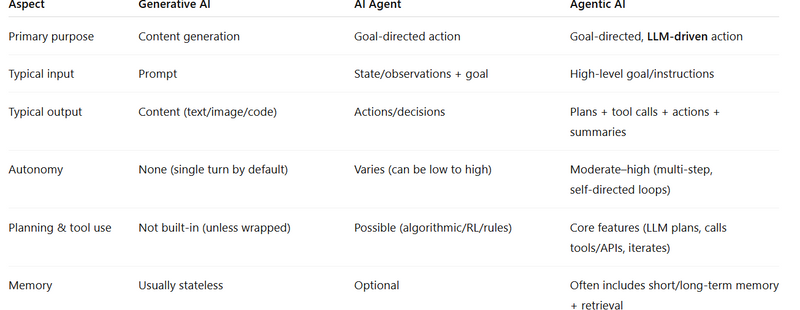

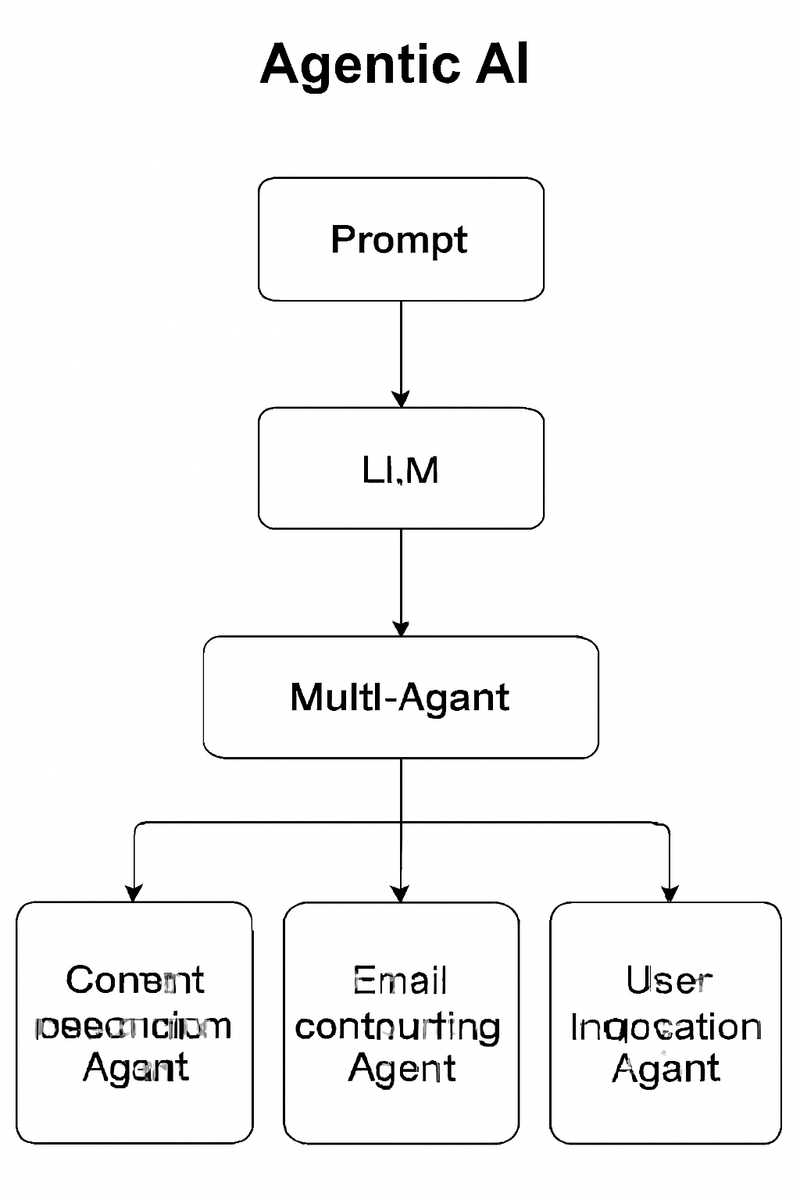


Top comments (0)